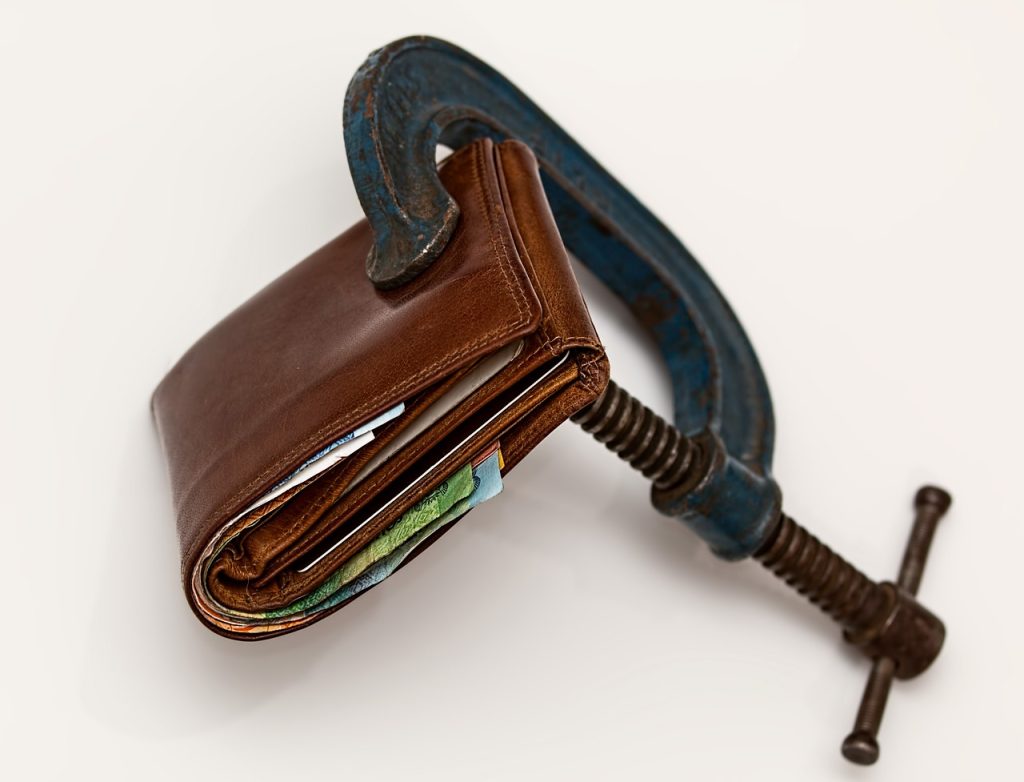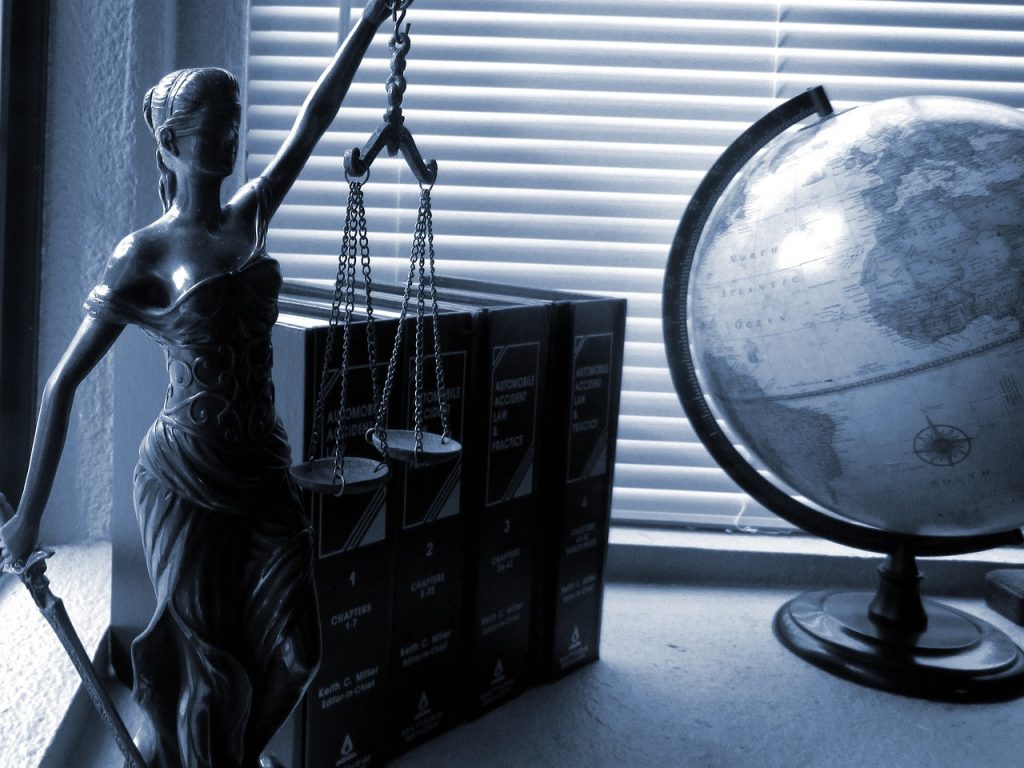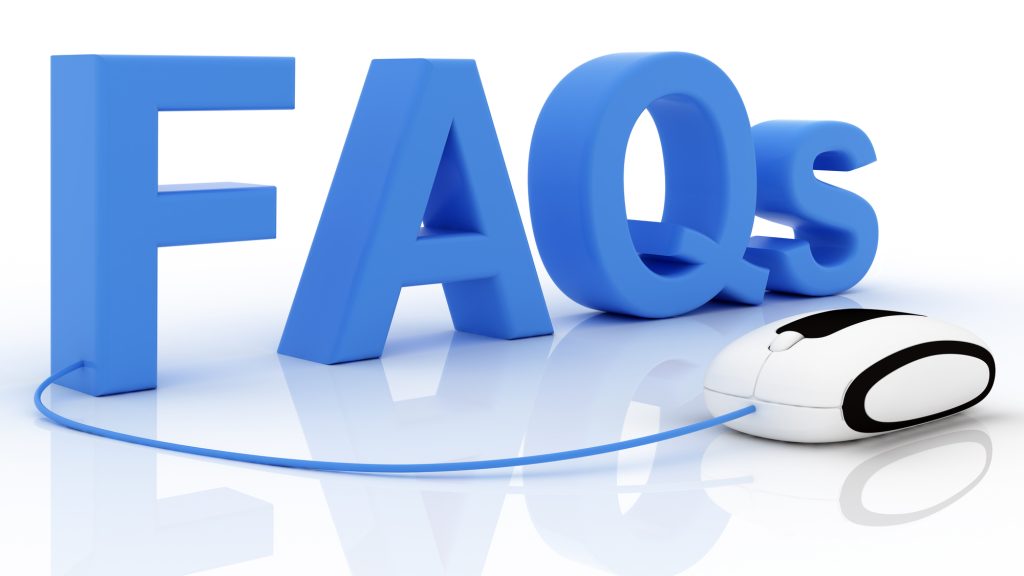Credit stacking is a term that has gained popularity among individuals looking to improve their credit scores and financial stability. It refers to the practice of using multiple credit accounts to build a strong credit history, increase credit limits, and access better financing options. Credit stacking involves using a combination of credit cards, loans, and other credit facilities to create a solid credit profile that shows lenders that you are a reliable borrower.

Understanding Credit Stacking requires knowledge of how credit works and how to use it to your advantage. It involves knowing how to manage your credit accounts effectively, making timely payments, and avoiding excessive debt. Credit stacking can also help entrepreneurs and investors access funding for their business ventures, as well as help individuals finance their personal goals and expenses. However, it is important to note that credit stacking can also lead to excessive debt and financial stress if not managed properly.
Key Takeaways:
- Credit stacking involves using multiple credit accounts to build a strong credit history and access better financing options.
- Understanding Credit Stacking requires knowledge of how credit works and how to manage credit accounts effectively.
- Credit stacking can be a useful tool for entrepreneurs and investors, but can also lead to excessive debt if not managed properly.
Understanding Credit Stacking
Credit stacking is a financial strategy that involves using multiple lines of credit to finance a single project or purchase. This strategy is particularly useful for individuals or businesses that need to borrow more money than they can obtain from a single lender.
To understand credit stacking, it’s important to have a basic knowledge of credit and loans. Credit is the ability to borrow money or access goods or services with the understanding that payment will be made at a later date. Loans are a type of credit that involves borrowing a fixed amount of money and repaying it with interest over a set period of time.
Credit stacking involves taking out multiple loans or lines of credit to finance a single project. For example, a business may take out a term loan from one lender, a line of credit from another lender, and a credit card from a third lender to finance a new product launch. By using multiple sources of credit, the business can access more funds than it would be able to with a single loan.
Credit stacking can be a powerful financial tool, but it’s important to approach it with caution. The strategy requires a high level of financial knowledge and discipline to manage multiple lines of credit effectively. Without proper education and course of action, credit stacking can lead to high levels of debt and financial instability.
In conclusion, credit stacking can be an effective financial strategy for those who have the knowledge and education to manage multiple lines of credit. However, it is important to approach this strategy with caution and ensure that it is used responsibly.

The Role of Credit Cards
Credit cards play a significant role in credit stacking, allowing individuals and businesses to build and maintain a strong credit history. Credit cards offer a convenient way to make purchases, track expenses, and earn rewards. In this section, we will explore the role of credit cards in credit stacking, specifically business and personal credit cards.
Business Credit Cards
Business credit cards are an essential tool for entrepreneurs and small business owners. They offer a range of benefits, including access to credit, rewards programs, and expense-tracking tools. Business credit cards can also help establish a separate credit history for the business, which can be beneficial when seeking loans or other forms of financing.
When choosing a business credit card, it is important to consider the interest rates, fees, and rewards programs offered. Some cards may offer cash back or points for specific types of purchases, while others may offer travel rewards or other perks. It is crucial to choose a card that aligns with the business’s spending habits and financial goals.
Personal Credit Cards
Personal credit cards also play a crucial role in credit stacking. They allow individuals to build and maintain their credit history, earn rewards, and access credit when needed. Personal credit cards can also provide protection against fraud and unauthorized purchases.
When selecting a personal credit card, it is important to consider the interest rates, fees, and rewards programs. Some cards may offer cash back or points for specific types of purchases, while others may offer travel rewards or other perks. It is essential to choose a card that aligns with the individual’s spending habits and financial goals.
In conclusion, credit cards are an essential tool in credit stacking, allowing individuals and businesses to build and maintain a strong credit history. When selecting a credit card, it is crucial to consider the interest rates, fees, and rewards programs offered to ensure it aligns with the individual or business’s spending habits and financial goals.
Debt and Credit Stacking
Credit stacking is a strategy that involves taking out multiple loans or credit accounts to improve one’s credit score. However, it can also lead to debt accumulation if not managed properly. In this section, we will discuss how to manage debt and debt consolidation as part of credit stacking.

Managing Debt
Managing debt is crucial to avoid falling into a debt trap. Here are some tips to help manage debt:
- Make a budget: Create a budget to track your expenses and income. This will help you identify areas where you can cut back on spending and allocate more money towards debt payments.
- Prioritize high-interest debt: Pay off high-interest debt first, such as credit card debt. This will save you money on interest payments in the long run.
- Avoid minimum payments: Paying only the minimum amount due on your credit accounts will prolong the repayment period and increase the overall cost of debt.
- Consider debt management programs: Debt management programs can help negotiate lower interest rates and consolidate debt into one monthly payment.
Debt Consolidation
Debt consolidation is the process of combining multiple debts into one loan or credit account. It can be a useful tool for managing debt, but it is important to understand the pros and cons.
- Pros: Debt consolidation can simplify debt repayment by consolidating multiple payments into one. It can also lower interest rates and reduce the overall cost of debt.
- Cons: Debt consolidation may extend the repayment period, which can increase the overall cost of debt. It may also require collateral, such as a home or car, which can be repossessed if payments are not made.
In conclusion, credit stacking can be a useful strategy for improving credit scores, but it is important to manage debt effectively and consider debt consolidation when necessary. By following these tips, individuals can avoid falling into a debt trap and achieve financial stability.
Interest and APR in Credit Stacking
When it comes to credit stacking, understanding interest and APR is crucial. Interest is the cost of borrowing money, and it is usually expressed as a percentage of the amount borrowed. Interest rates can vary depending on the type of credit and the lender.
In credit stacking, it’s important to pay attention to interest rates because they can add up quickly. For example, if someone has three credit cards with interest rates of 15{f86eb52b72635cfe8037e692bfd6fd71f184edad68d90d779da97d27c5203a0b}, 18{f86eb52b72635cfe8037e692bfd6fd71f184edad68d90d779da97d27c5203a0b}, and 20{f86eb52b72635cfe8037e692bfd6fd71f184edad68d90d779da97d27c5203a0b}, and they carry a balance of $1,000 on each card, they will end up paying $1,670 in interest charges over the course of a year.
APR, or annual percentage rate, takes into account not only the interest rate but also any fees associated with the credit. APR is a better indicator of the true cost of credit because it includes all costs associated with borrowing.
Many credit cards offer 0{f86eb52b72635cfe8037e692bfd6fd71f184edad68d90d779da97d27c5203a0b} interest for a limited time, usually for balance transfers or new purchases. While this may seem like a good deal, it’s important to read the fine print. After the introductory period ends, the interest rate can jump significantly, making it difficult to pay off the balance.
In credit stacking, it’s important to compare interest rates and APRs to find the best deal. It may also be helpful to prioritize paying off higher-interest debts first to avoid accumulating more interest charges.

Credit Scores and Reports
Credit scores and reports play a vital role in credit stacking. A credit score is a numerical representation of an individual’s creditworthiness. Lenders use it to determine the likelihood of a borrower defaulting on a loan.
Credit scores are calculated using information from credit reports, which contain an individual’s credit history. Credit reporting agencies, also known as credit bureaus, collect and maintain credit information on individuals. The three major credit reporting agencies in the United States are Equifax, Experian, and TransUnion.
Credit reports typically include information on an individual’s payment history, credit utilization, length of credit history, types of credit used, and new credit. Payment history is the most significant factor in determining credit scores. Late payments, defaults, and bankruptcies can significantly lower credit scores.
Credit scores range from 300 to 850, with higher scores indicating better creditworthiness. A score of 700 or above is generally considered good, while a score below 600 is considered poor.
It is essential to regularly check credit reports for errors or inaccuracies that could negatively impact credit scores. Individuals are entitled to one free credit report from each of the three major credit reporting agencies per year. It is also possible to purchase credit reports and scores from various providers.
In conclusion, understanding credit scores and reports is crucial in credit stacking. By maintaining a good credit score and regularly checking credit reports, individuals can improve their creditworthiness and increase their chances of obtaining favorable loan terms.
Loans and Credit Stacking
Credit stacking is the practice of obtaining multiple loans or lines of credit from different lenders or sources. This strategy can be useful for both personal and business purposes. In this section, we will discuss how loans fit into the credit stacking strategy for businesses and individuals.
Business Loans
Business loans are a common form of credit that businesses can use to finance their operations or growth. There are various types of business loans available, including small business loans, debt consolidation loans, and lines of credit.
Small business loans are designed for businesses that need funding to start or expand their operations. These loans are typically offered by banks or other financial institutions and can be secured or unsecured. Debt consolidation loans, on the other hand, are used to consolidate multiple debts into a single loan with a lower interest rate. This can help businesses save money on interest payments and simplify their debt management.
Lines of credit are another form of business credit that can be useful for credit stacking. A line of credit is a revolving credit account that businesses can use to access funds as needed. This type of credit can be secured or unsecured and can be a good option for businesses that have fluctuating cash flow or need to cover unexpected expenses.

Personal Loans
Personal loans are another type of credit that can be used for credit stacking. These loans can be used for a variety of purposes, including debt consolidation, home improvements, or other personal expenses.
Like business loans, personal loans can be secured or unsecured. Secured loans require collateral, such as a home or car, while unsecured loans do not. Personal loans can also be offered as fixed or variable-rate loans, depending on the lender and the borrower’s creditworthiness.
Overall, loans can be a useful tool for credit stacking, but it’s important to use them responsibly and carefully manage debt. By diversifying credit sources and using credit wisely, individuals and businesses can build strong credit profiles and achieve their financial goals.
Entrepreneurship and Credit Stacking
Entrepreneurs and small business owners often face challenges when obtaining financing for their ventures. Traditional lending institutions may require collateral, a strong credit history, and a proven track record of success. However, credit stacking can provide a solution for those who may not meet these requirements.
Credit stacking involves obtaining multiple loans from different lenders to finance a business. This approach can be beneficial for startups and new businesses that may not have a long credit history or substantial collateral. By obtaining multiple loans, the entrepreneur can spread the risk among different lenders and increase their chances of obtaining the necessary financing.
One of the benefits of credit stacking is that it allows entrepreneurs to access a wider range of financing options. For example, an ecommerce business may be able to obtain a loan from an online lender that specializes in ecommerce financing, while also obtaining a line of credit from a traditional bank. This approach can also help entrepreneurs build their credit history by establishing relationships with multiple lenders.
However, it is important to note that credit stacking can also have its drawbacks. Multiple loans can result in higher interest rates and fees, which can increase the overall cost of financing. Additionally, managing multiple loans can be complex and time-consuming, requiring careful attention to repayment schedules and terms.
Overall, credit stacking can be a useful tool for entrepreneurs and small business owners looking to finance their ventures. By obtaining multiple loans from different lenders, they can increase their chances of obtaining financing and access a wider range of options. However, it is essential to carefully consider the potential costs and complexities involved in this approach.

Financing and Investments
When it comes to credit stacking, financing and investments play a crucial role in the process. Financing can help individuals or businesses obtain the necessary funds to purchase assets or make investments. On the other hand, investments can provide a source of income or capital appreciation.
Real estate is one of the most common areas where financing and investments are used in credit stacking. Real estate investments can provide a steady stream of income through rental properties or capital appreciation through property value appreciation. Financing options for real estate include traditional mortgages, private lenders, and hard money loans.
Investments in stocks, bonds, and mutual funds can also be used in credit stacking. These investments can provide a source of income through dividends or capital appreciation through stock price increases. Financing options for investments may include margin accounts or personal loans.
Funding options such as crowdfunding or angel investing can also be used in credit stacking. Crowdfunding allows individuals to pool their money together to invest in a project or business. Angel investing involves high-net-worth individuals investing in early-stage startups in exchange for equity.
Overall, financing and investments are important components of credit stacking. By utilizing these options, individuals and businesses can obtain the necessary funds to make investments and increase their wealth.
Budgeting and Expenses
When it comes to credit stacking, budgeting and keeping track of expenses is crucial. It is important to have a clear understanding of how much money is coming in and going out each month. This includes both personal and business expenses.
Creating a budget can be done in a variety of ways, but a simple method is to list all sources of income and all expenses. This can be done in a spreadsheet or on paper. It is important to be realistic when estimating expenses, and to include both fixed expenses (such as rent or mortgage payments) and variable expenses (such as groceries or entertainment).
Once a budget has been created, it is important to track expenses to ensure that spending stays within the budget. This can be done by keeping receipts and recording expenses in a spreadsheet or budgeting app. By tracking expenses, it is easier to identify areas where spending can be reduced in order to save money.
For businesses, it is important to keep track of both personal and business expenses separately. This can be done by setting up separate bank accounts and credit cards for business expenses. By keeping business and personal expenses separate, it is easier to track business expenses for tax purposes and to ensure that business expenses do not affect personal credit scores.
Overall, budgeting and keeping track of expenses is essential for successful credit stacking. By having a clear understanding of income and expenses, it is easier to make informed decisions about credit utilization and to avoid overspending.
Community and Support
Credit stacking is not an easy task, and it can be a lonely journey for those who are just starting out. That is why community and support are crucial for anyone who wants to succeed in credit stacking.
Joining a credit stacking community can provide a wealth of knowledge and support. Members can share their experiences, offer advice and tips, and help each other navigate the complex world of credit stacking. Being part of a community can also provide a sense of belonging and motivation to keep going, even during difficult times.
Mentorship is another valuable resource for those who want to succeed in credit stacking. Having a mentor who has already gone through the process can provide guidance and support, and help avoid costly mistakes. A mentor can also offer a fresh perspective and help identify opportunities that may have been overlooked.
Relationship managers are another important resource for those who want to succeed in credit stacking. Relationship managers can help identify the best credit products for a particular situation, and provide guidance on how to use them effectively. They can also help negotiate better terms and conditions, and provide ongoing support throughout the credit stacking process.
In conclusion, community and support are essential for anyone who wants to succeed in credit stacking. Whether it is through joining a credit stacking community, finding a mentor, or working with a relationship manager, having access to knowledge, advice, and support can make a significant difference in achieving credit stacking success.

Legal Aspects of Credit Stacking
Credit stacking is a legitimate way to obtain multiple loans from different lenders, but it is important to understand the legal implications of this practice. The Federal Trade Commission (FTC) has warned consumers about the potential risks of credit stacking, including the possibility of scams and bankruptcy. Here are some legal aspects of credit stacking to consider:
Personal Guarantee
When applying for multiple loans, lenders may require a personal guarantee. This means that the borrower is personally responsible for repaying the loan, even if the business fails. It is important to read the terms and conditions carefully and understand the risks involved before signing any agreements.
Collateral
Lenders may also require collateral to secure the loan. This could be in the form of property, equipment, or other assets. If the borrower defaults on the loan, the lender may seize the collateral to recover their losses. Again, it is important to understand the terms and conditions of the loan and the risks involved.
Scams
Unfortunately, there are scams associated with credit stacking. These scams may involve fraudulent lenders who promise to provide multiple loans but then disappear with the borrower’s money. It is important to do research and only work with reputable lenders who have a track record of providing legitimate loans.
Bankruptcy
Credit stacking can also increase the risk of bankruptcy. If a business is unable to make the required payments on multiple loans, it may be forced to file for bankruptcy. This can have serious consequences for the business owner, including the loss of personal assets and a damaged credit score.
In conclusion, credit stacking can be a useful tool for obtaining multiple loans, but it is important to understand the legal aspects and risks involved. Borrowers should read the terms and conditions carefully, only work with reputable lenders, and be aware of the potential consequences of defaulting on multiple loans.

Conclusion
Credit stacking is a powerful tool that can help individuals and businesses accelerate their path to financial freedom. By strategically using multiple lines of credit, individuals can access larger amounts of credit, which can be used to invest in assets or pay off debts.
One of the most significant benefits of credit stacking is the ability to access larger lines of credit. By opening multiple credit accounts and maintaining a good credit score, individuals can qualify for higher credit limits. This can be particularly useful for those who need to finance large purchases or investments.
Credit card stacking is a popular form of credit stacking that involves opening multiple credit cards and using them to make purchases. This can be an effective way to earn rewards points and cash back, but it is important to use credit cards responsibly and avoid carrying a balance.
Business credit can also be used for credit stacking, allowing businesses to access larger lines of credit and invest in growth opportunities. By building a strong business credit profile, businesses can qualify for better loan terms and interest rates.
Overall, credit stacking can be a valuable tool for those looking to accelerate their path to financial freedom. However, it is important to use credit responsibly and avoid taking on too much debt. With careful planning and smart financial management, credit stacking can help individuals and businesses achieve their financial goals.

FAQS
Q: What is credit stacking?
A: Credit stacking is a financial strategy where a business owner leverages multiple credit cards to access a higher line of credit than they could obtain from a single credit card or traditional business loan.
Q: How does credit card stacking work?
A: Credit card stacking works by applying for multiple business credit cards and strategically using the available credit limits to fund various aspects of the business. This allows for more flexibility and higher funding capacity compared to utilizing only one credit card or loan.
Q: Are there specific credit card stacking companies that offer this service?
A: Yes, there are several credit card stacking companies that specialize in helping businesses utilize credit card stacking to access funding and manage their business operations effectively.
Q: Is credit card stacking a good option for business funding?
A: Credit card stacking can be a viable option for business funding, particularly for those seeking quick access to capital without the need for extensive documentation or lengthy approval processes. However, it’s important to carefully manage the credit lines and payments to avoid potential financial risks.
Q: What are the benefits of business credit card stacking?
A: Business credit card stacking can provide benefits such as higher credit limits, quick access to funds, potential rewards or cash-back offers, and the ability to separate personal and business expenses. It can also contribute to building a strong business credit score when used responsibly.
Q: How can I use credit card stacking to improve my business’s financial position?
A: By strategically utilizing credit card stacking, businesses can access the necessary funds to invest in growth opportunities, manage cash flow, cover operational expenses, and build credit history, ultimately supporting the expansion and success of the business.
Q: What are the risks associated with credit stacking?
A: The main risk of credit stacking is the potential for accumulating high levels of debt and incurring substantial interest payments if the credit lines are not managed responsibly. It’s crucial to monitor credit utilization and make timely payments to avoid financial strain on the business.
Q: Can business owners apply for multiple credit cards to stack credit limits?
A: Yes, business owners can apply for as many credit cards as needed to create a stack of credit limits, provided they meet the credit requirements of the issuing banks and demonstrate the ability to manage multiple lines of credit effectively.
Q: How does credit card stacking differ from traditional business loans?
A: Credit card stacking offers a more flexible and potentially faster funding solution compared to traditional small business loans, as it allows for quick access to funds without the stringent requirements and lengthy approval processes associated with traditional business financing.
Q: How can credit card stacking help grow your business?
A: Credit card stacking can help grow your business by providing the necessary capital to invest in new opportunities, expand operations, manage working capital needs, and build credit history, ultimately contributing to the long-term success and stability of the business.

